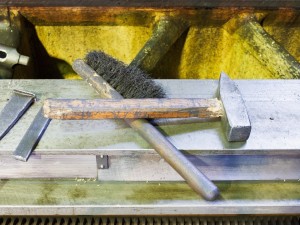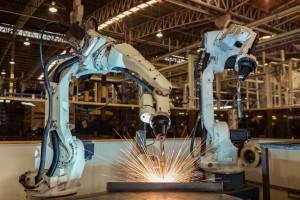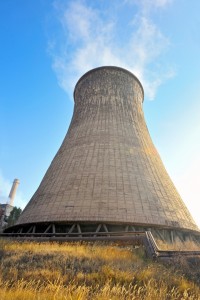What is Plant Optimization?
Plant optimization is a way for plant owners to get the most out of their facilities. While there are many algorithms that can help determine the exact effectiveness of a plant’s input to output ratio, there are a variety of ways that you can improve your plant optimization for the long haul. From making sure that all mechanical features are installed correctly and outfitted to reduce time loss, to updating the electrical features of your plant and focusing more on eco-friendly methods to protect the health of your employees, here are some of the ways to ensure your plant is operating as smoothly as possible.
Overview of plant optimization techniques
The first thing many plant owners think of when they consider plant maintenance optimization is the installation of robotic or mechanical equipment to help speed up processing. While this can help reduce the output time down the road, robotics are not a one-and-done installation. Even if you believe your assembly line is working at its fullest potential, you may be missing some precise calibrations to ensure the best output for your input. When it comes to plant optimization, no correction is too small, as even the slightest misstep can cost you thousands of dollars in the long run. That is why checking the quality and calibration of your robotics and mechanical features can help your plant run smoothly and efficiently.
Another feature of plant maintenance optimization is ensuring the best electrical usage for your plant. Installing new wiring and more eco-friendly lighting and heating options not only reduce the environmental impact of your plant, but can also reduce your energy consumption over time. This in turn allows for a bigger bottom line for you, with less payout towards utilities. More eco-friendly plant options can not online reduce your energy use, but can also prevent the amount of waste created by your plant, and can ensure a healthier working environment for your employees.
THE MOST COMMON PITFALL FOR PLANT MANAGERS
Determining efficiency in a factory is quite simple: balance the ratio between output and input.
As of now, most handle just fragments of what makes total efficiency.
For example, one plant needs to improve its labor hours and wage costs. To solve this, the plant may replace the labor with equipment. The plant may not develop skills and systems though to realize the full potential of the machines, and operations will not function at peak efficiency.
What plants don’t realize is that buying machinery won’t solve all your problems. You have to manage their implementation. The investment is not just in the cost, but how carefully you manage its integration.
Ultimately, you as a plant manager are responding to changing customer demands and technological opportunities. Yes, it requires change, but not confusion.
Much confusion and inefficiency at a plant is generated internally.
Confusion is like static. It keeps you from seeing things clearly. It’s one of the major barriers when optimizing your plant’s efficiency. That’s why companies bring on a third party to optimize their plant operations.
PLANT PERFORMANCE MONITORING
Not many plants have a firm handle on their monitoring. This is why profit opportunities go unnoticed and equipment malfunctions seem spontaneous.
Without proper plant performance monitoring, you open yourself to always playing “catch up”.
When we optimize a plant, this is what we offer:
- Identify optimal equipment and proper operation
- Form action plans to stay proactive on maintenance
- Anticipate problems before they cause major disruptions to operations
- Enhance in-house monitoring procedures
- Implement proper data tracking systems
ECO-FRIENDLY UPGRADES CAN MAKE YOUR PLANT MORE EFFICIENT
Adopting greener practices in your warehouse can improve your company’s bottom line. Energy efficient practices can reduce costs, improve employee safety and health and decrease waste.
If you want a more eco-friendly business, consider introducing some of the following practices into your warehouse design and management:
ELECTRICAL UPGRADES
Outdated electrical systems waste energy. Upgrading to a new system will reduce consumption, though you must hire an electrical contractor who can develop a streamlined design with minimal downtime.
IMPROVED LIGHTING
Well-designed lighting can both cut your power bills as well as improve safety and productivity. A lighting designer can make a thorough assessment of your warehouse and draw up plans for a new system. Effective light placement and high-efficiency bulbs should be part of the design, as well a compliance with safety codes.
REDUCE AND REUSE MATERIALS
Most warehouses use a lot of packaging materials. Reducing shipping supplies can help you lower the cost of materials. It can also reduce shipping costs and the resources needed to move products within your facility. Here are some ideas to reduce extra packaging:
- Identify areas of waste and make changes to eliminate excess packaging.
- Choose biodegradable materials. Using more eco-friendly materials reduces pollution and minimizes your employees’ contact with potentially harmful substances.
- Reuse materials such as pallets, plastic totes and shipping supplies.
- Recycle materials you can’t reuse.
PROCESS DESIGN FOR CHEMICAL ENGINEERING PLANTS
We understand chemical industries are highly complex and often involve several businesses and systems.
Optimizing these processes comes down to effective resource management.
In chemical engineering, when you organize and exploit your resources properly, you see processes become more streamlined.
As you know, chemical engineering does not happen in isolated systems. Chemical processes can blend into different environments. At Storee, we work with chemical engineering plants to help them merge interactions and make this process more cohesive.
This is more important now than ever given the tighter regulations on environmental concerns. Our recommendations always keep this at the focus.
PLANT OPTIMIZATION IN ACTION
One successful case of plant optimization came from an ethanol plant.
Their problem was obvious from the start: the plant was built on a tight budget, and their plan to recoup costs was to minimize energy by reducing equipment use.
To deal with a fluctuating economy, they had to lower their energy costs, which was difficult given the interconnectedness of their system. These decisions also had an effect on operations.
A third party company was brought in, and solved this by integrating a pinch model. The challenge came in that their existing equipment was not designed for it.
A mass and energy balance was developed as well as a concept energy recovery model. Certain equipment pieces—like mash trains, flash tanks and vent coolers—were replaced to reduce energy.
The outcome was 12.5% reduction in steam and 20% drop in natural gas usage. The ethanol plant was able to increase production and reduce downtime, and is still profitable to this day.
OPTIMIZED PROCESS DESIGN

One of our production improvement projects at Storee came when we had to install a hammer mill in an existing production area. It was a 22,000 pound machine that required a reinforced concrete foundation. A project of this scope forced the plant to be out of production.
We compressed the project into a 10-day completion. To accomplish this, we used detailed project task scheduling and a specialized concrete pouring process. As an added benefit, we transported the production equipment to the plant maintenance area for needed preventative maintenance so we could take advantage of scheduled equipment downtime.
THE BENEFITS OF OUTSIDE CONTRACTOR FOR PLANT OPTIMIZATION
The hardest part with your plant’s growth is keeping proper sight of your mission. This is where it helps to bring in a third party. It can be quite difficult to keep a firm handle on everything, and a comprehensive audit with cutting-edge tools could be the first step in getting your plant to operate at peak efficiency.
Industrial contractors familiar with your manufacturing processes are in the best position to provide this analysis. They understand your operations and have the expertise to evaluate your facilities. Using flow diagrams, they can help you achieve ideal facility infrastructure, improved equipment layouts, optimized overall plant size and offer a variety of alternatives and options.
Commercial construction contractor in Springfield, MO
If you are looking to outfit your plant with more money and time saving features, or are looking to invest in any labor saving machinery, contact Storee Construction to get an estimate today. We are also happy to help answer any questions you may have or compare price lines between types of wiring or electrical devices. Optimizing your plant can not only ensure that you are getting the best output possible for your plant, it can also make your workplace a safer, more efficient place to work.



